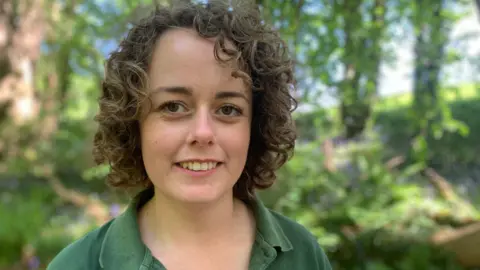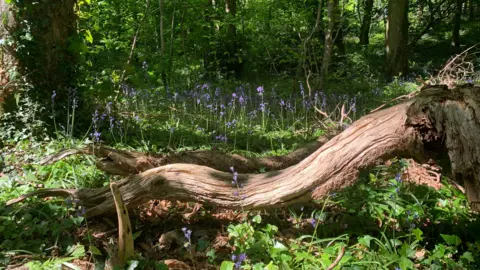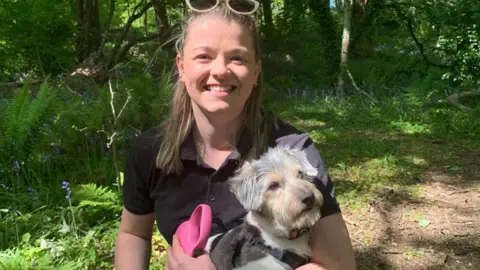The folklore helping to protect the bluebells
 BBC
BBCBluebells, in case you didn't know, are protected by law. You shouldn't pick them, damage them or transplant the bulbs.
If that wasn't enough to put you off perhaps the idea of being visited by a bad fairy might do the trick.
Bronagh Gallagher, from the Woodland Trust , is a Community Development Officer at Mourne Park in Kilkeel, which has the aptly named 'Bluebell trail' for people to visit.
She has a couple of cautionary tales from folklore. One says: "If you hear the bluebell ring you might be visited by a bad fairy and things don't go too well for you after that."
Or if you "pick a bluebell - the fairies being mischievous may come along and lead you astray and you may end up wandering around that woodland for a very long time, very, very lost."

Bluebells are a very "delicate flower" that tend to bloom between the middle of April and the middle of May in Northern Ireland.
Ms Gallagher says the native bluebell "are found in places of great significance" and are "an indicator of an ancient woodland" which is why they are often associated with being "magical".
"It's funny that the cultural stories and the folklore around it are all based around the protection of them as well."
She believes it shows that "we've always loved bluebells and understood the need to protect them".
 Getty Images
Getty ImagesAt Mourne Park in Kilkeel they've been removing the non-native invasive species like rhododendron and laurel to make room for the bluebells.
Ellie Green is Site Manager for Woodland Trust which owns the park. She says plants like those "block out any sunlight getting to the woodland floor and they out compete any of the native species that you'd get like bluebells".
There are more than 100 acres of woodland there, 73 of them ancient.
"So far we've made our way through 60 hectares of woodland, restoring it."
She says seeing the bluebells "come back after we've done the removal work shows that the work we are doing is worth it and it's worthwhile".

The main danger to the future of the bluebells now is humans.
"As soon as you step on them and break them then you can ruin quite big swathes of bluebells."
Ms Green says they understand that people want to take pictures with them "but we ask that people keep their dogs on leads and keep themselves to the paths as well."
She says it's vital that these "seeds can go all the way from going into flower to then going into seed to then going through their life cycles".
There's still a small window left for people to see bluebells this year before they reappear next spring.
